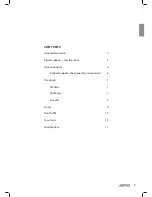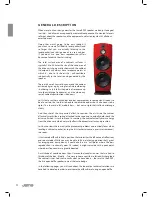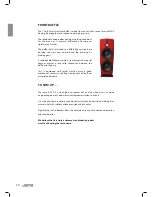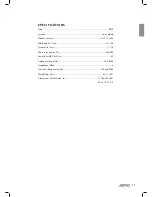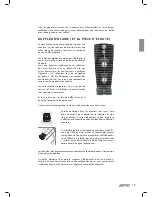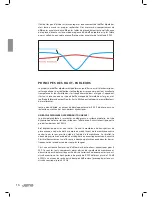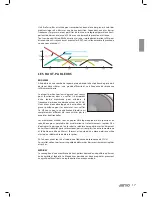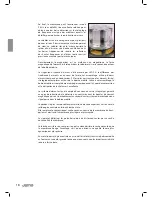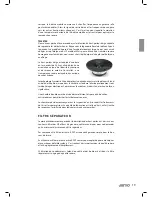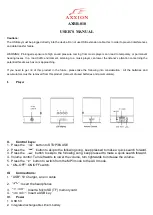
5
D I P O L A R S P E A K E R – A N D T H E R O O M
As we have discussed earlier, placing a cabinet speaker (pressure transducer) in a
room creates its own unique challenges.
So exactly how does a dipolar speaker (or velocity transducer)”behave”?
Due the dipolar radiation pattern, sound is
distributed from the front and rear of the speaker
– in opposite phase. This is important because with
a conventional loudspeaker, side wall (i.e. 1st order)
refl ections typically are in opposite phase with the
direct transmitted sound from the drive units i.e.
they sound annoying.
However, with a dipolar radiation pattern there is
virtually no ‘sideways’ sound transmission and so
the critical 1st order sound refl ections are practically
eliminated.
But, you might ask, what about the sound
transmitted from the rear of the speaker… doesn’t
that destroy imaging and the soundstage?
Actually, when placed correctly the laws of psycho
acoustics come into play.
The human ear uses the fi rst sound received (the 1st
wave-front) to determine the direction of the sound (i.e.
where it’s coming from). That means that even if refl ected
sound is slightly delayed it doesn’t affect the brain’s ability
to determine direction.
If a dipolar speaker is placed a minimum of 3ft/1 m
away from the rear wall and angled in slightly (as a
serious listener with cabinet speakers would probably
do anyway), the refl ected sound will be delayed (due to
physical distance and the fact it will be bouncing off two
boundaries before reaching the listener’s ears) but it still
gives directional cues.
Now the 2nd order refl ections add ambience and give the listener the impression
of a much larger room.
Summary of Contents for R 909
Page 1: ...TECHNICAL DESCRIPTION Jamo R 909 ...
Page 2: ...français deutsch english ...
Page 3: ...2 english ...
Page 13: ...français ...
Page 23: ...deutsch ...
Page 33: ...32 ...
Page 34: ...33 ݙ ᆍ ὖ䗄 ي ᵕᓣ ㆅ ᠓䯈 偅ࡼॳ ϔϾ ي ᵕᓣ ㆅг㛑ѻ 䞡Ԣ 偅ࡼऩ ܗ Ԣ Ё 催 ߚ乥 ࠡ䱰ᵓ ᘏ㒧Ă 㾘Ḑ ...
Page 42: ...www jamo com ...




